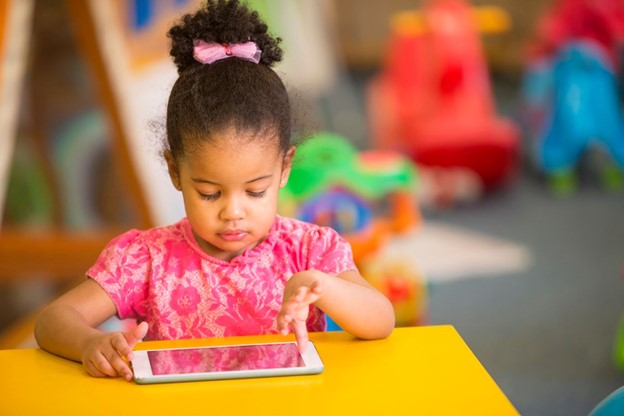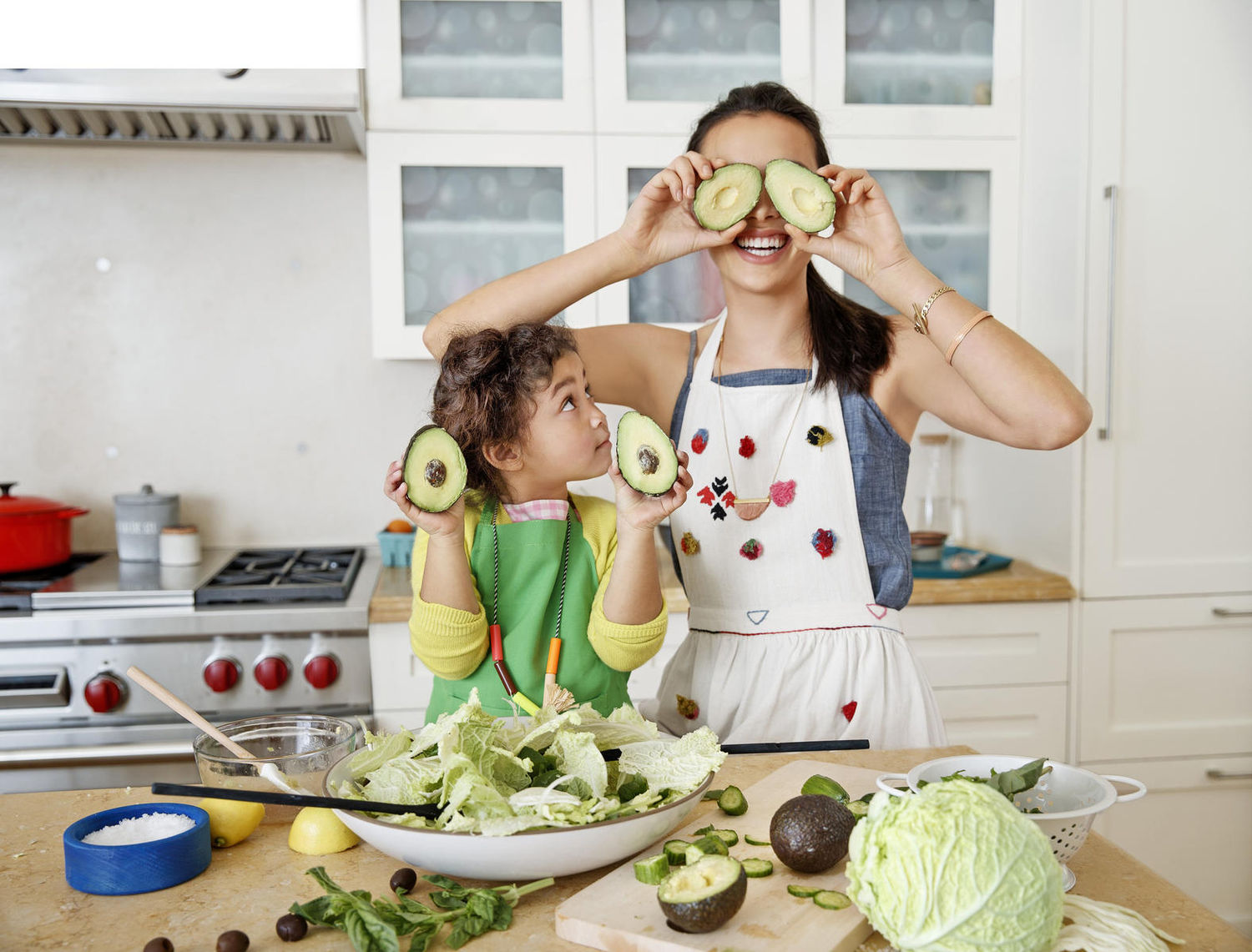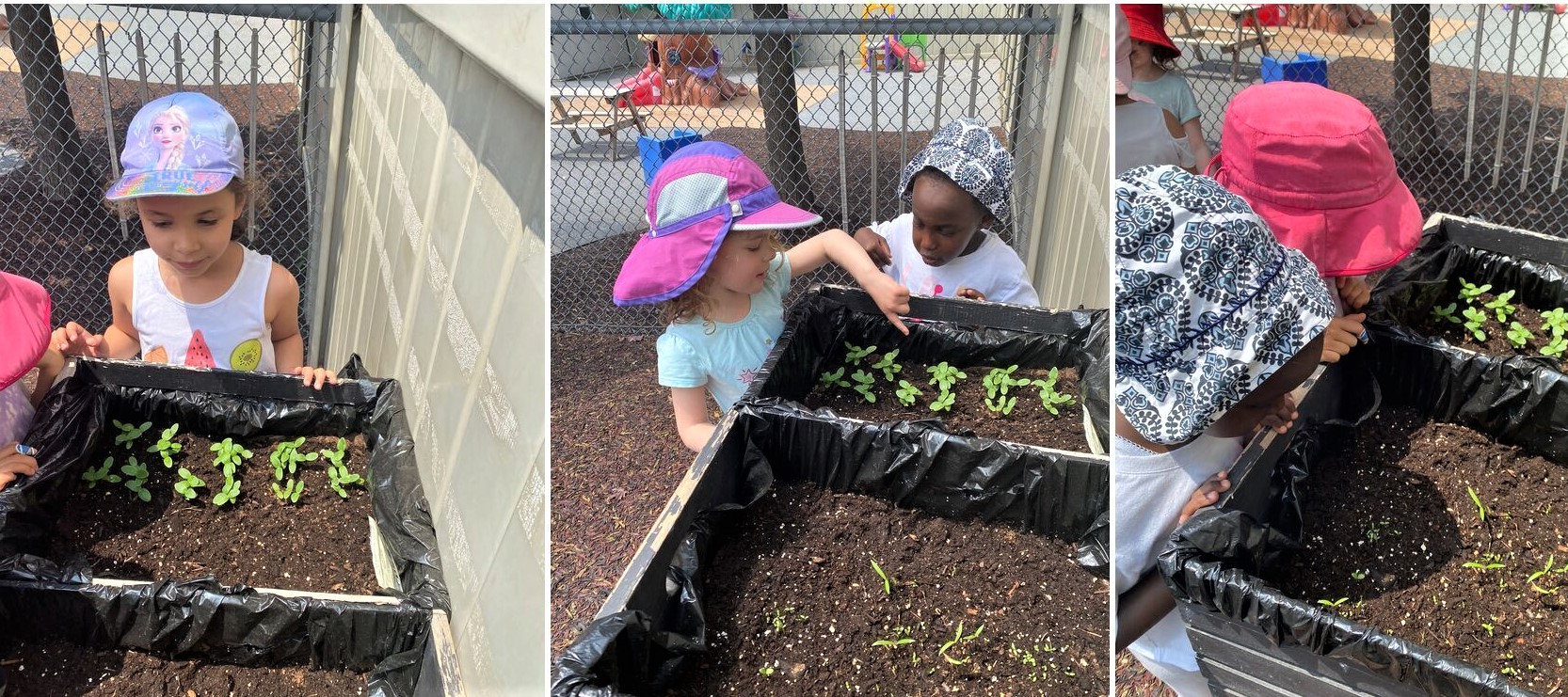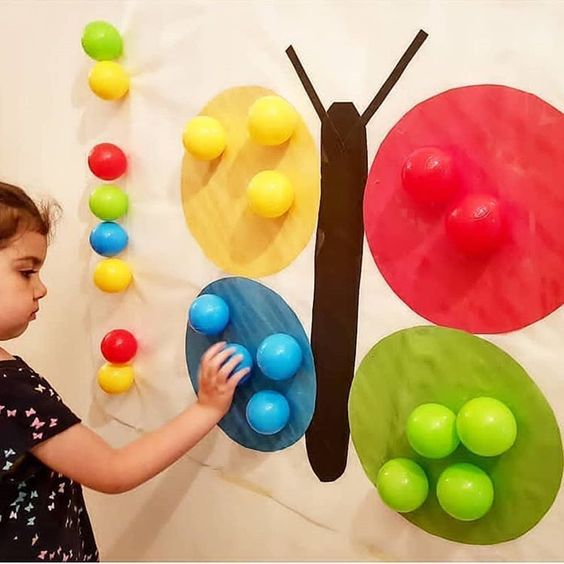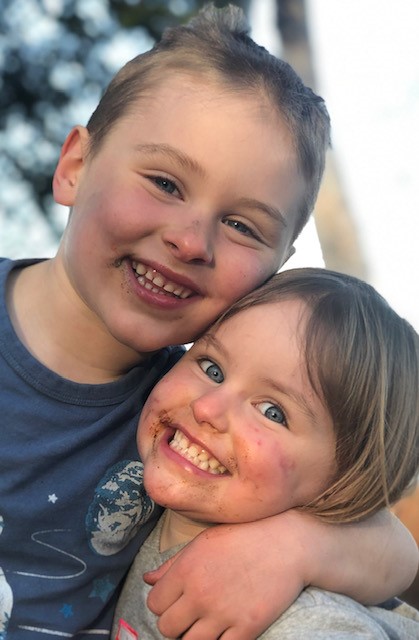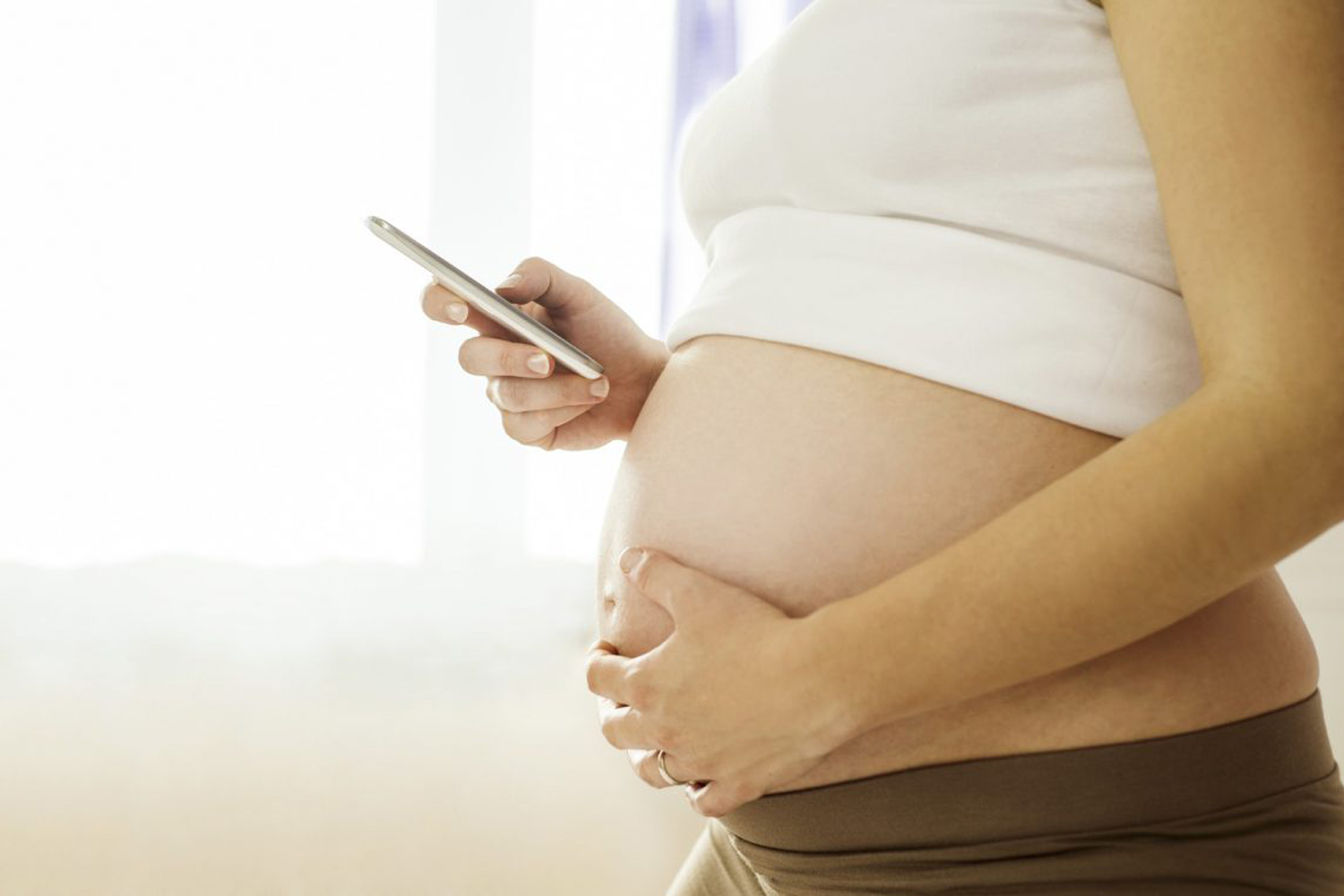Engineering in the Early Years
Four Pillars Of Learning – Pillar #2 – STEAM (Engineering edition)
by Susie Beghin, RECE, Founder of Alpha’s Discovery Kids
My mission has always been to provide children with the best possible start in life and help them develop the critical skills they need to thrive.
When I began writing my book, ‘Learn To Play,’ my primary goal was to use the experiences and knowledge I have gained as an ECE educator and mother. It was also a way for me to document our daycare curriculum and make it accessible to parents everywhere!
The Four Pillars of Learning is a comprehensive program that addresses a child’s physical, cognitive, social, emotional, and spiritual well-being. It comprises Language & Literacy, STEAM (Science, Technology, Engineering, Art, and Math), Physical Activity & Nutrition, and Mindful Awareness.
At Alpha’s Discovery Kids, these pillars are prominently displayed in every classroom across our three locations, and our goal is to ensure children have access to a well-rounded education while learning in a meaningful (and fun) way.
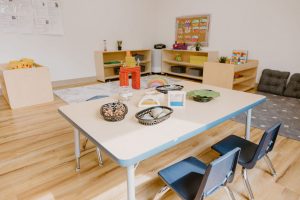
Pillar 2 – STEAM – E is for Engineering
One of the pivotal parts of STEAM is engineering, but when people hear the term ‘engineering,’ they often think it’s something that young children cannot do. However, I use the term intentionally because engineering is precisely what these children do. “Engineering is the process by which young children discover how things in their world are built, and how they work”.
One of the ways we teach engineering in our classrooms is through dedicated and specific areas for construction and building activities. In my last blog, we detailed the integral part that loose parts play in children using their creativity and imagination while learning.
And alongside loose parts, we incorporate materials such as blocks, which hold a special place in my heart. The reason I love blocks is that they are open-ended and allow children to create anything they desire, promoting imagination and creativity. In engineering in our classrooms, we have and use blocks of all sizes, which encourage stacking, sorting, connecting, and disconnecting.
When children engage in engineering activities, they often gravitate towards building tall towers. There is a sense of accomplishment in constructing something tall, even if it only lasts for a few seconds before being knocked down. Both the act of building and knocking down are significant learning experiences, as it allows children to explore concepts of balance, size, and structure as they figure out how to make their towers taller and more stable.
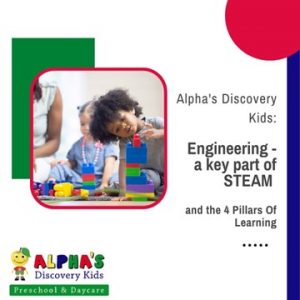
In engineering, we also shift our focus from the end product to the process itself. Instead of dictating what children should create, we provide them with materials and let them decide how to use them. The learning lies not in making a specific object but in gaining insights into size, balance, and cooperation. Engineering becomes a cooperative activity where children work together, negotiate, and problem-solve as they construct and interact with their creations.
The construction area of our classrooms also serves as a hub for social skill development. Children learn to collaborate with their peers, navigate conflicts, and share ideas. They face situations where they need to communicate their preferences and make decisions collectively. It’s an environment that fosters cooperation and encourages children to develop essential social and emotional skills.
The construction area is often our classrooms’ most popular and well-utilized space. Children are drawn to the joy of building and creating. It is a place where their imaginations come alive, they have the freedom to experiment, and they can engage in hands-on learning experiences. As a result, we allocate significant space to this area, recognizing its importance in promoting exploration, creativity, and problem-solving.
Through our focus on engineering, we strive to instill a sense of wonder and curiosity in children. We want them to understand that the process of building and creating is just as valuable as the end result. By embracing engineering in early childhood education, we provide children with opportunities to develop critical thinking skills, expand their imaginations, and foster cooperative relationships.
At Alpha’s Discovery Kids, we are committed to cultivating a love for learning and empowering children to become lifelong learners. Our Four Pillars of Learning, including the exploration of engineering through STEAM, form the foundation of our curriculum. Through these pillars, we create an environment where children can grow, explore, and discover their talents.
For more information on our 4 Pillars of Learning, or to book a tour, please contact us at https://www.alphasdiscoveryclub.com/contact/ or call us at 905-823-8257.
Young Children and Technology
Young Children and Technology
by Susie Beghin, RECE, Founder of Alpha’s Discovery Kids
At Alpha’s Discovery Kids, we recognize the world is an ever-changing place. And with technology continuing to evolve in leaps and bounds, our young children are even more technologically advanced than we could have ever imagined.
This is part of the reason why I wrote my book, ‘Learn To Play’. I wanted to share my knowledge and learnings that I have personally acquired during my time as an ECE educator and a mother. It is important that I share what I know about how children learn with other parents.
At Alpha’s Discovery Kids, we teach kids using our 4 Pillars of Learning curriculum in a way that is playful and fun. Our 4 Pillars of Learning include: Language & Literacy, STEAM (Science, Technology, Engineering, Art and Math), Physical Activity & Nutrition and Mindful Awareness. When I was developing the 4 Pillars, I wanted to ensure I created a program that meets a child’s needs from physical, cognitive, social, emotional and spiritual well-being.
In this article, I want to focus on technology and how it can play a valuable role in young children’s development.
Technology (the second part of STEAM)
Technology is at the core of mostly everything we do nowadays. When we hear the word “technology,” the first thing that often comes to mind is screen time. However, at our daycare, technology is so much more than that. We embrace technology as a tool that enhances learning, fosters parent involvement, and creates exciting opportunities for children to explore the world around them.
Technology as a Resource Tool:
In our classrooms, we utilize iPads as resource tools, opening up a world of knowledge to young minds. For example, when learning about the solar system, we can access captivating videos that visually depict the planets, enabling us to teach complex concepts in an engaging and interactive manner. Technology becomes a catalyst for exploration and discovery, enhancing the learning experience for our children.
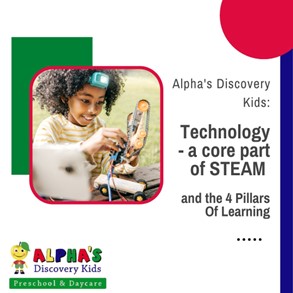
Connecting with Experts and Resources:
Through technology, we have access to a wealth of experts and resources. Whether it’s inviting guest speakers via video conferences or conducting virtual field trips, we can bring diverse perspectives and experiences directly into our classrooms. Technology enables us to expand our horizons and expose children to a vast array of knowledge and expertise.
Communication and Parent Involvement:
One of the most remarkable benefits of technology in our daycare is the ability to record and share children’s daily activities. Through our app, HiMama, we capture videos, photos, and data, documenting each child’s progress, meals, sleep patterns, bathroom breaks, and educational milestones. This instant and real-time information empowers parents to stay involved in their child’s daily life, creating a strong connection between the daycare and home.
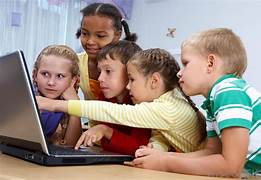 Research and Exploration:
Research and Exploration:
Technology serves as a gateway to endless knowledge. When children have questions or curiosities, we can use technology to conduct research together. For instance, if we want to delve into the fascinating world of polar bears, we can easily access factual information, statistics, and even watch videos about their habitats and behaviors. This interactive approach instills a love for learning and nurtures children’s natural curiosity.
Creativity and Play:
Technology also has a role in fostering creativity and imaginative play. We incorporate music into our classrooms, utilizing technology to play songs and create a lively atmosphere. Additionally, we encourage children to explore their creativity by using technology to record and produce their own little videos, allowing them to express themselves and share their experiences with others.
At Alpha’s Discovery Kids, technology is not a mindless tool for entertainment; it is a purposeful and valuable asset that enriches the learning environment and strengthens the bond between parents, children, and educators.
We harness the power of technology to empower children, promote active learning, and create a sense of involvement and collaboration among parents. Technology opens doors to a world of knowledge, ensuring that our children are equipped with the skills and curiosity needed to thrive in the digital age.
By combining multiple aspects of STEAM every single day, our educators at Alpha’s Discovery Kids are able to teach multiple concepts in one lesson. And STEAM is a pivotal part of this learning.
For more information on our 4 Pillars of Learning, or to book a tour, please contact us at https://www.alphasdiscoveryclub.com/contact/ or call us at 905-823-8257.
4 Pillars Of Learning – Pillar #2 – STEAM (Science)
4 Pillars Of Learning – Pillar #2 – STEAM (Science)
by Susie Beghin, RECE, Founder of Alpha’s Discovery Kids
At Alpha’s Discovery Kids, we aim to create a nurturing, safe space where every child feels they are in their home away from home.
And we know that the first six years of a child’s life are the most formative. These are the years when young brains develop rapidly, and children are like sponges, soaking up information and modelling behaviours from those around them.
That’s why providing the best learning environment possible is at the core of everything we do. We are committed to showing children how to develop the critical skills they need to succeed in life.
With each child’s unique strengths taken into account, we believe in child-initiated and teacher-supported learning experiences that foster their naturally inquisitive nature and cater to their individual needs.
We do this by focusing on our 4 Pillars of Learning: Language & Literacy, STEAM (Science, Technology, Engineering, Art and Math), Physical Activity & Nutrition and Mindful Awareness.
And as you walk through each of our Alpha’s Discovery Kids locations, you’ll experience our award-winning 4 Pillars Of Learning system echoed in each classroom.
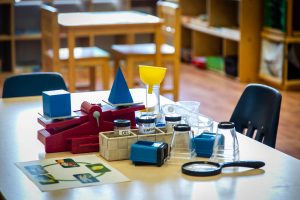
SCIENCE (The first component of STEAM)
We infuse learning in everything we do and believe that the strength of our pillars is in combining learnings from multiple pillars.
Science activities are a fan favourite at Alpha’s Discovery Kids, as it often involves many things to do with nature.
Some of the fun ways we introduce and teach science include:
- Nature walks – a great way of combining physical activity, mindfulness, language and science, nature walks are a fantastic way of sparking children’s natural curiosity. With so many things in nature to see, children can experience a multi-sensory world of wonderment on every trip outside.
- Bringing nature inside – with so many aspects of nature for children to learn, we love bringing nature inside. This can include sensory bins filled with soil, mud painting and exploring the various properties of soil (from dry to wet). Kids also enjoy planting seeds inside pots which stay in the classroom until they are ready to be transplanted outside in the spring.
- Look beyond chemistry – a lot of people associate science with chemistry. And we absolutely enjoy doing some fun chemistry experiments in our classrooms. But there are so many different aspects of science to explore, including astronomy, biology and physics. We dabble in every area of science so that our children can explore the various disciplines of science.
At Alpha’s Discovery Kids, we find that children, in general, are budding explorers, and science is all about exploration and discovery. So we encourage each of our children to understand that as they explore something new in their world, they’re actually little scientists!
As we teach science in our classrooms, it’s done in an age-appropriate manner. For our toddlers, we teach science through several activities, focusing on sensory-oriented activities. We find that toddlers love exploring sensory bins, experimenting with water, how various items float, how sand flows through different sieves and exploring a wide variety of natural materials, including pine cones, soil, leaves, etc.
As we progress through the older ages, kids explore science by creating their own solar system, making their own planets and learning where each is located. We also begin to explore sources of energy, the differences between living and nonliving things, the different types of animals and plants, and their characteristics.
By making science fun, we can tap into a child’s natural desire to learn.
For more information on our 4 Pillars of Learning, or to book a tour, please contact us at https://www.alphasdiscoveryclub.com/contact/ or call us at 905-823-8257.
Meal planning for Busy Parents: 5 tips for budget-friendly meals
Meal planning for Busy Parents: 5 tips for budget-friendly meals
As busy parents, it may be difficult to get a nutritious meal on the dinner table each night. And with food costs rising, it may be difficult to do so with a limited budget. I am sure that you have often thought, “What am I going to make for dinner tonight?”. Rest assured, you are not alone. It is possible to feed your family nutritious meals almost every day. Here’s five tips to help you offer nutritious meals for your family on a budget!
-
Plan Ahead
I’m sure you have heard that planning is the key to healthy eating. When we fail to plan, we often choose less nutritious food choices. This doesn’t mean you need to map out each meal and snack for the entire week and stick to it. This approach is probably doomed to fail for most of us. It’s difficult to stick to a rigid meal plan. Instead, try to plan out the week by sketching out a rough meal plan centered around your proteins and think about how you will prepare the meals each week. You can start by choosing to plan the dinners only. Remember to make allowances for your schedule and obligations. For example, if you know that you will be working late one night, you will choose any easy dinner that might include leftovers from a previous meal or something that is simple to make.
-
Shop Wisely
Shopping for food also involves some planning. It’s best to plan out what you will buy before going to the grocery store. To extend your food dollar further, try planning your meals around the weekly sale and promotional items. Use coupons and price matching to purchase items that you need. Purchase off the reduced racks if you can use the items quickly. It will save you money if you check your fridge/freezer/pantry at home prior to shopping. Many times, we buy items that we already have at home because we failed to check what we have. Most importantly, stick to the shopping list and avoid shopping when hungry or emotional. Stay clear of those eye-catching food displays too! This will help you to avoid impulse buying which often adds up at the cash register. Another budget friendly tip is to know how grocery stores place their products. The most expensive items are usually at eye level on the shelf. Try to look above and below eye level for better deals.
-
Choose One Plant-based Protein Meal each week
You will save money by choosing one plant-based protein meal each week such as lentils, beans, or other legumes. These foods are also jam packed with fiber which we all need! Here’s a few great websites with lots of recipe ideas:
-
Make a Balanced Meal
According to the Canada Food Guide, your food plate should have a balance of protein, fruit, veggies, and grains. Fruits and veggies should make up half your plate. The other half is split equally between protein and whole grains. Choose foods that are in season to get the best value for your money and the best nutrition and taste. You can find out when foods are in season in Ontario by visiting https://www.ontario.ca/foodland/page/availability-guide. When you can’t buy items in season, you can choose frozen food options that were picked at the peak of the season.
-
Cook Smart
Having good cooking appliances, utensils and tools will make cooking easier. Invest in good quality appliances that can reduce cooking time or can be used hands-off, such as a slow cooker, instant pot, or air fryer. This will free up your time to do other things. Invest in good utensils and tools that make chopping and slicing easy too! When the cooking process is easy, you will be more motivated to make healthy meals.
You can involve your whole family (even the kids) in the entire process – from planning to shopping to cooking! Teaching about nutrition is one of our Four Pillars of Learning at Alpha’s Discovery Kids. You can find out more about our program and curriculum here.
Gardening With Kids: 7 Lessons They Learn
Gardening With Kids: 7 Lessons They Learn
At Alpha’s Discovery Kids, encouraging growth and development is what we do best. Our students have become very involved in tending to classroom plants. We have made it a seasonal tradition to create an outdoor garden with our preschoolers. They love digging and planting at the beginning of the season, watching the growth and then picking the vegetables during the middle of the season. All the knowledge they gain throughout the process will stay with them for years to come. The learnings will shape them as they grow into adults who will one day be responsible for their own little place in the world. When children help in the garden, they begin to understand what it takes to grow. They begin to understand that plants need water and food just like they do.
7 Lessons children learn from gardening
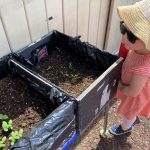 Engages all the senses–Gardening can be a complete sensory experience for kids. Growing plants isn’t about just digging in dirt, although that’s a great way to experience using the touch sense, but kids can use all their other senses while learning how to grow their own food. Sight, taste and smell comes into play when they get to experience the aromas and tastes of what they have harvested.
Engages all the senses–Gardening can be a complete sensory experience for kids. Growing plants isn’t about just digging in dirt, although that’s a great way to experience using the touch sense, but kids can use all their other senses while learning how to grow their own food. Sight, taste and smell comes into play when they get to experience the aromas and tastes of what they have harvested.
Encourages healthy eating–Learning to grow your own food encourages you to eat it. As you and your family eat more and more fruits and vegetables as your garden produces, they may be experiencing new foods for the first time and discovering new favorite foods too.
Life cycles-Big lessons can be learned in the garden about life and the lifecycle of plants, bugs and animals. From new baby rabbits (that you want to keep out) to mature bees carrying honey back to the hive and to the life of the plants themselves, they can literally watch life happen in the garden.
Bugs are useful-Gardening shows kids how useful bugs are in the world. They begin to understand that even earthworms have a place in the circle of life. Learning these things can help make bugs seem less scary.
Nurturing & Responsibility-These two are technically different skills but they really go hand-in-hand. Helping plants grow teaches kids how to nurture a little life and it teaches them responsibility since they will have to help water and feed the plants. Remembering to do this and helping adults keep an eye on the plants is a big responsibility for children. They love to watch as their hard work pays off and the garden vegetables grow.
Family bonding– Gardening is a family experience. Everyone can gets involved on some level. It’s fun for us to do it together and experience growing food or plants. Not only is it fun but it gives us a chance to teach kids so much and that’s fulfilling for us and them.
Gardening is good for the soul-Gardening gives us a chance to pause and get back to nature. Nature has a way of calming us. No screens are involved so that’s a big bonus. It’s a time out from the rest of life when they just get to concentrate on the dirt between their fingers.
Open House – Daycare and Summer Camp 2022
Daycare and Summer Camp Open House 2022
We are so excited to showcase our beautifully expanded and renovated facility in Oakville at our Open House this weekend. We want to give you a little sneak peek of the activities that will be offered for children during this event.
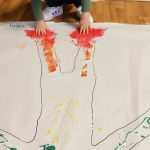
As families wander our hallways, classrooms, and outdoor playground area, they will see featured activities on display as well as engage in some hands-on activities with their children. This will give prospective families an opportunity to experience our Four Pillars of Learning curriculum first hand.
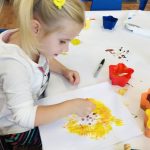
We will be offering some yummy snacks, treats and refreshments to enjoy during this event. We welcome children of all age groups to explore each room and participate in what is being offered along with their parents.
Our program grows with your child and because we know that your families are growing too, we have offerings that begin as early as infants all the way up to 12 years of age.
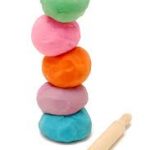
The founder of Alpha’s Discovery Kids and owner of all three Alpha’s locations, Ms. Susie will be here to meet and greet all guests. Our centre Supervisor Ms. Shannon will also be onsite ready to greet you with a smile, answer questions and offer a personal tour. Our talented team of core educators will be waiting for you in our classrooms ready to represent and showcase our proprietary holistic curriculum.

This event offers a unique opportunity for our existing parents to engage with each other and share their experiences with new families too. Even though we are a well-known award-winning location with a 5-star rating and amazing reviews, nothing beats a real parent to parent chat. We know that education, cleanliness, safety, food and nutrition, love and comfort are the top priorities of all parents. We can’t wait to open our doors and share what we have to offer. With a variety of programs and flexible options, there is sure to be something for everyone.
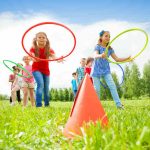
We offer Full-time, Part -time, Toddler, Nursery school, Jr. & Sr Preschool, Kindergarten, Before and After School – Age programs and Summer Camps.


Back to school during a Pandemic: What to expect in 2021
Back to school during a Pandemic: What to expect in 2021
After a warm summer, September has finally rolled around and it’s that time of year when our little ones head back to school or perhaps start attending a new daycare or preschool. We are now 18 months into a pandemic and it’s not over yet! We seem to headed toward a fourth wave here in Ontario which will increase our anxiety levels as we strive to find ways to get back to some kind of normal routine while staying safe.
So, what can you expect for this new school year? Many of the COVID protocols and policies for schools and daycares will continue into the 2021-22 school year. Here’s what to expect:
COVID PROTOCOLS
- Screening – Be prepared for daily screening of your child. Whether your child attends daycare, preschool or any type of school, there will be a requirement for the school to screen the child daily to ensure the child is free from COVID related illness symptoms, has not travelled in the last 14 days and that everyone in their household is also healthy and not exposed to anyone with COVID or COVID symptoms.
- Illness – As cold viruses circulate in the Fall/Winter, be prepared to stay home with your child when they are ill for a few days. Also be prepared to get your child COVID tested if you want them to return to school or daycare quickly. Without testing, your child would need to isolate for 10 days.
- Masks – Masking of children over two years old is still recommended by public health. For children in daycare under 5 years old, masks are not mandatory but still recommended at the parent’s discretion. If your child is between 2-5 years old and attending daycare, you will need to decide if your child will wear a mask or not. Starting in Grade 1, masks are mandatory so ensure your child has a comfortable mask that they can wear for long periods of time.
- Face-to-face communication – Much of the communication between teachers and parents will take place via zoom. In daycares and schools, the use of apps makes it easier to communicate with teachers even though you can’t see them face-to-face on a daily basis.
- Hand Hygiene – Ensure your child knows how to properly wash hands and use hand sanitizer.
In addition to these COVID protocols, there’s the regular back to school preparation as well. Here’s some tips to help you prepare:

Back to school
BACK TO SCHOOL TIPS
- Set safety rules for travelling to and from school: if your child walks or rides the bus to school, talk to them specifically about safety rules. For children in daycare, you may want to discuss parking lot safety and suggest that they need to hold your hand while walking from the parking lot to the daycare entrance.
- Label all clothing and supplies (but not where visible): It’s important to label everything that you bring to school or daycare to avoid it ending up in the lost and found. Remember to label on the inside so that it is not visible to strangers.
- Ask your child open ended questions about their day as part of your pickup routine: find creative ways to talk about it rather than the typical question “How was your day?” which normally doesn’t give you much info. Make sure your child understands that it’s okay for them to talk to you and their teacher about their needs or concerns.
- Role play: talk to your child about the new teacher/school/daycare and make it positive. If you are anxious about anything, they will pick up on that and it will cause them anxiety too! You can also role play different situations that may come up at school or daycare such as dealing with conflicts.
I am sure that for most of us, the first few weeks following back to school can be a little crazy. Remember to breathe, take time for yourself and enjoy the moment! Before you know it, your kids will be all grown up!
Especially in the younger years, our children will look to us for reassurance about daycare and school more than we think they will. While a cautious parent is a good parent, a wise parent will take great care to monitor the messages that they are sending to their child. If you start early by teaching your child how to stay safe and lay some ground rules, then you are off to a great start with preparing your child for life in the real world.
For more information about COVID protocols in the upcoming school year in Ontario, Visit https://www.ontario.ca/page/covid-19-health-and-safety-measures-schools
For more information about Alpha’s Kindergarten program, click here.
Water Safety Tips
Water Safety Tips
Water safety is an important topic that we must educate ourselves about as parents. Knowing how to be safe in and around water is one way to keep your family safe. While water safety is somewhat of an unpleasant topic, it continues to be an important one. Even if you think you already know everything about water safety, take a moment to review these educational tips. I few minutes of reading may help to save a life. Knowing the risks is the key to preventing injuries and or death.
Children are naturally drawn to water and quickly discover the fun of splashing in it. Sensory play especially with water should be encouraged but ensuring that this is done safely is essential. You can never be too careful when it comes to water safety whether you are inside or out.
Close attention needs to be placed on safety around water to prevent drowning, scalding or electrocution. Regardless of your child’s age – whether infant, toddler preschoolers, school age or if you have young, curious, or even clumsy pets, it’s important to know that the number one safety tip is Supervision.
Here is why …. Did you know that babies can drown in as little as just 1 or 2 inches of water? It can happen silently, and within seconds, especially infants, because they don’t have much neck and muscle control.
Remember: Never leave your child alone or in the care of another young child in or near water—not even for a moment.
Most child drownings inside the home occur in bathtubs, and more than half of bathtub deaths involve children under 1 year of age.
Here are a few simple safe water tips to live by and share with anyone who cares for your child.
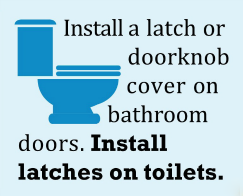
Bathroom water safety tips:
- Put toilet lids down. Install safety latches or locks on all toilet seat lids to keep curious little fingers from lifting them.
- Pull the plug on the tub. Consider removing the bathtub drain plug when it’s not in use to avoid the tub filling if a child turns on the faucet.
- Keep the bathroom door closed. As an added layer of safety, use safety latches or doorknob covers to keep bathrooms closed.
- Check the water temperature. Before putting your baby in the bath, check the water temperature with your wrist or elbow. Tap water that’s too hot can quickly cause burns serious enough to require a hospital visit or even surgery. In fact, hot water scalding is the top cause of burns among babies and young children.
- The hottest temperature at the faucet should be no more than 120 degrees Fahrenheit to help avoid scald burns. In many cases you can adjust your water setting to not go above this temperature.
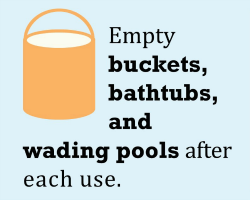 Outdoor water safety:
Outdoor water safety:
- Never leave a filled, open-top water container unattended. Whenever they’re not in use, be sure to completely empty any liquids in containers such as:
- buckets and pails used for cleaning or painting
- wading pools
- coolers with melted ice
- large water bowls for pets
- trash cans or recycling bins that may collect rainwater
- secure swimming pools, including large, inflatable above-ground pools and other temporary pools, should be surrounded by a fence on all 4 sides.
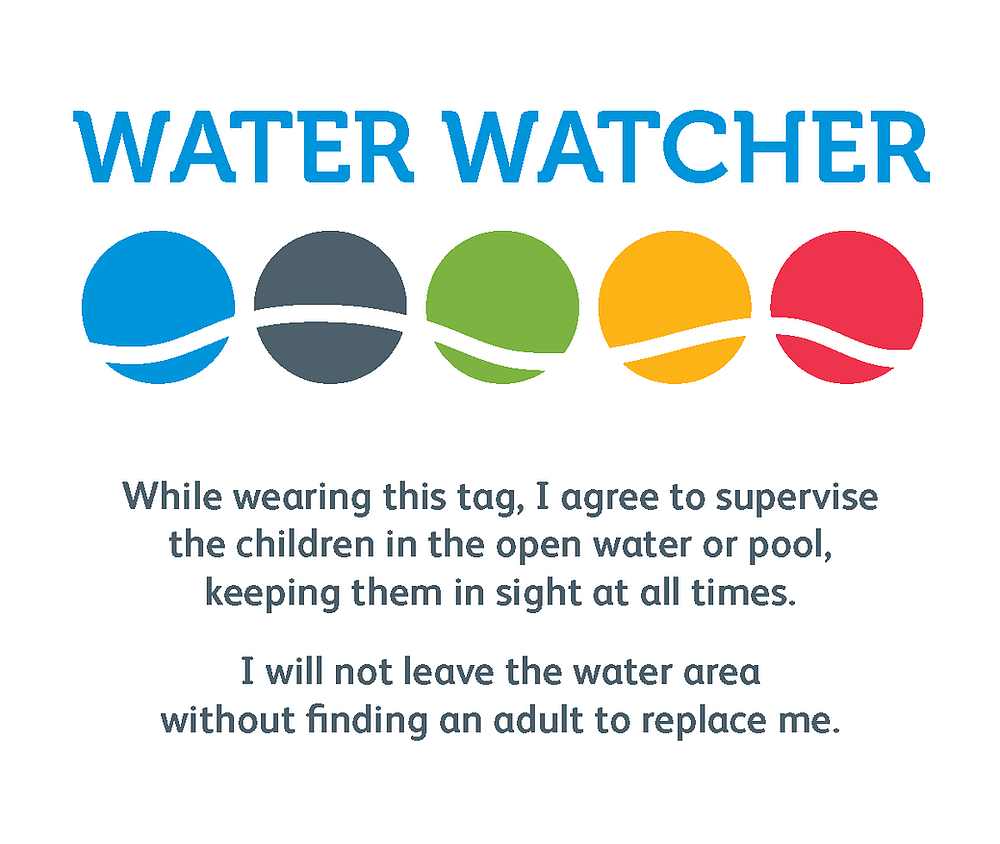 Pools:
Pools:
- Assign a qualified Adult or youth with life saving certificate to supervise children
- Ensure life jackets and flotation devices are used with supervision
- Ensure Life preservers are readily available
- Use a water watcher sign. Assign a “water watcher” to supervise at all times and ensure they know their responsibility.
- Pool fences should: be at least 4 feet high and have no opening under it or between slats more than 4 inches wide.
- Check the gate frequently to be sure it works and keep it always locked.
- Keep toys out of the pool area when not in use so that children are not tempted to try to get through the fence.
- Be sure to always cover and lock hot tubs and spas right after using them.
Use touch supervision
- Have a towel within reach so you can always keep a hand on your baby so that you are within arms reach at all times.
- Before your baby begins to crawl or walk, check your home and surrounding area for any other potential water dangers.
![]()
Water and electricity don’t mix
- Be sure to keep electrical cords, battery powered devices and other power sources away from water and out of the reach of children.
It’s important that you teach your children water safety!
- Teach children the guidelines, rules, and boundaries around water that they will understand and follow.
- HAVE FUN AND PLAY SAFE!
Mindful Mud – An Essential Play Experience!
Mindful Mud – An Essential Play Experience!
While the idea of getting messy to some may be unappealing, especially a parent or caregiver that has to clean up the mess! For those that may be skeptical, consider all the benefits of playing in the dirt.
The earthy goodness of mud gives our kids an opportunity to engage in messy play, practice mindfulness and connect with nature. Think of a time when you made a sandcastle and suddenly lost track of an hour. That was you, feeling the effects of mycobacterium vacate. This is a big word for the microscopic bacteria in dirt that increases the serotonin level in our brains, making us feel happy and relaxed.
Our young technologically savvy generation of kids are just not getting enough time to play outside – especially with online learning and technological distractions. While you can simulate many experiences virtually these days, playing in the dirt is not on that list.
Have you ever noticed that children who play outside laugh more? And laughter leads to feeling good! Kids who play outside also grow in their character development: they become more adventurous, more self-motivated, and they are better able to understand and assess risk.
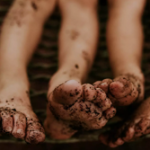
THE SCIENCE OF MUD
- MUD INCREASES BRAIN ACTIVITY– When children play with mud they use all of their senses, resulting in a highly stimulated and active brain.
- MUD INCREASES PHYSICAL ACTIVITY-When children play outdoors, and in mud, the incidental movement and physical activity increases, helping children maintain a healthy lifestyle and develop their physical literacy.
- MUD REDUCES ALLERGIES & ASTHMA SYMPTOMS -Dirt is also great for the immune system, especially in children. Research has shown that early exposure to naturally occurring microbes in soil will help build stronger, more disease-resistant kids.
- MUD PLAY BUILDS CREATIVITY – The open-ended nature of mud play is perfect for the developing brain. There is no end to the creations, ideas and games children will invent. During this type of unstructured, outdoor play, children are not only exercising but are building their ability to form ideas, problem solve, and think critically, as well as be innovative and inventive.
Here are some ideas for your children:
- If you want to control the mess a bit or have limited space, try a mud kitchen !
- Give your child a bucket and a shovel and set them in the dirt. See what happens.
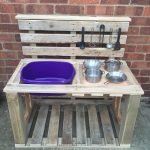
If you really want to control the mess, you can also create a DIY mud sensory bin. Check out our blog on how to create DIY sensory bins.
BabySafe Project – Pregnancy and Wireless Radiation
BabySafe Project – Pregnancy and Wireless Radiation
Have you head of the Babysafe Project? I recently became aware of this project which addresses a very serious issue affecting our future generations of children. What is the impact of widely used wireless technology on the unborn?
I have always been in awe of the process by which humans come into existence. From a single cell to a growing fetus to a baby born into this world full of life! Many women who learn that they are pregnant start to eat differently, take care of themselves and feel a strong sense of responsibility for this new life inside them.
Over time, we have learned more about environmental impacts to children within the womb. From the food you eat to the water you drink to even the air you breathe can all have an impact to that new life growing inside you. It may seem overwhelming but knowing the risks and things you can do to reduce harmful exposures is within your control.
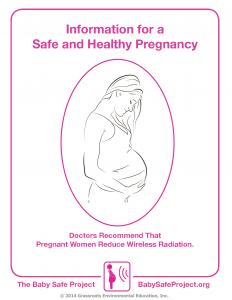
The Babysafe project focuses on one key environmental influence – wireless radiation. They point to scientific research that indicates that wireless radiation exposure can be harmful – even carcinogenic – to your baby and therefore should be avoided or reduced. Visit www.babysafeproject.org to learn more about the science and research and the effects of wireless radiation on both you and your child.
So, what can you do to reduce or eliminate your wireless radiation exposure risk? First and foremost, is awareness of the issue. Spread awareness to everyone you know about the risks and steps you can take to protect yourselves and your little ones.
Here’s some simple steps to reduce exposure to wireless radiation:
1) Do not carry your cell phone on your body – not in your bra or pocket
2) Don’t hold the cell phone, tablet or other wireless electronic device against your abdomen
3) Avoid cordless phones – especially in your bedroom – phones with a cord don’t emit radiation!
4) Streaming results in higher levels of radiation exposure – try to download and then use it in “Airplane mode”
5) Use connected wired devices for your computers instead of wireless
6) Unplug your WiFi router at home when not in use (e.g. at bedtime)
We’re fortunate to have two locally-based national not-for-profit organizations that collaborate with The BabySafe Project in raising awareness about the Project. Canadians For Safe Technology (C4ST) is based in Oakville, online at c4st.org. Electromagnetic Pollution Illnesses Canada Foundation (EPIC) is based in southwest Etobicoke, online at iexistworld.org. These organizations welcome questions, have a wide variety of resources (electronic and printed materials), and meet online with parent groups who want to learn more.
More resources:
In this video, women talk about how they reduce their risk.


